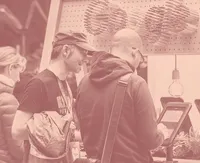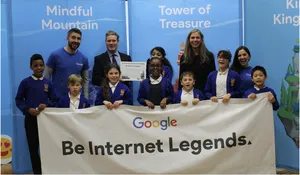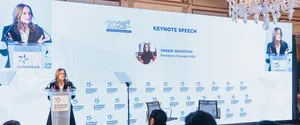Google's Digital News Initiative Fund

Editor's note: In April 2015, Google announced the Digital News Initiative, a partnership with European news organizations to support high-quality journalism through technology and innovation. In this guest post, Bart Brouwers, a Dutch journalism professor at the University of Groningen and a council member of the Digital News Initiative’s Fund, looks back at what the Digital News Initiative’s fund has accomplished so far.
If the distribution of money from Google’s DNI Innovation Fund is any indicator of the state of innovation in Europe, then Britain and Germany are doing great.
With more than 90 funded projects between them in the first three rounds of funding, the two countries stand head and shoulders above the others. Germany’s projects have been allocated more than 13 million euros, with around 7 million in Britain. Spain (with 25 projects) is just behind them: 6.6 million euros. My home country the Netherlands is in the middle with 18 projects and allocated funding of 2.5 million euros.
So far, 73.5 million of the available 150 million euro have been distributed. The newest winners were announced on July 6 and we’ll begin accepting applications for Round 4 on September 13.
As a member of the DNI Innovation Fund Council, I often get questions about how the process works, how projects are evaluated and what role the Fund plays in furthering innovation in publishing. I’ll do my best to explain it here.
The DNI Council consists of three Google representatives and ten publishers, scientists and journalists from across Europe. The Chairman is Portugal’s Joao Palmeiro. For the 10 of us who are non-Googlers it’s voluntary work; For us, it’s an opportunity to see behind the scenes of European media innovation. Because of the overwhelming interest (some 3,082 initiatives were submitted for the first three rounds!), the Council focuses mainly on the category of large projects—that is, applications for more than 300,000 euros.
When we met in the Dutch innovation capital of Eindhoven this June to judge the applicants of the third round, the debate occasionally became heated; justifying the acceptance or rejection of a proposal isn’t something any of us takes lightly. The debate over each application, as well as the distribution of funding across countries takes time because, just as the level of innovation differs from country to country, so does the number of applications, the nature of the projects and more.
Because it’s difficult to weigh a blockchain application against a video project or a new distribution model for content we consider six aspects when evaluating projects: the potential impact on the European ecosystem, transformation for the organization, innovation, the use of technology, feasibility and income possibilities. In particular, in evaluating the aspect of transformation, organizations which may be lagging behind in digitization terms are given a bit of an extra chance. This means that sometimes a project receives assistance because the applicant’s organization or country might be transformed by the project—even if a similar project is already running elsewhere.
This is an important point for potential applicants to know: that the presence of a similar initiative elsewhere is not a reason to deny funding. Two initiatives working on a similar topic can sometimes have a better chance of succeeding than just one, and the circumstances between projects are always just a little bit different.
When reflecting upon the trends of which initiatives are receiving funding, I’d argue that it’s not a reflection of the Council’s taste, but of the breadth and variety of the applications. In the first two rounds, for example, as detailed in the DNI Innovation Fund Report, seven categories rose to the top: Intelligence, Workflow, Interface, Social, Business Model, Distribution and “Next Journalism.” This last group—far and away the largest—includes issues of verification (pretty much everything summed up in the battle against fake news, and restoring trust in journalism). Around 25 projects of this type received support in the first two rounds—and funding was decided before “fake news” became household language.
Of course through the Digital News Initiative, Google wants to display its friendliest face to the European media sector. That this image cannot be taken for granted recently became apparent again with the 2.4-billion fine imposed by the European Commission in its antitrust action for Google’s shopping comparison service, but the internet giant has also had other difficulties with Europe. Free news, a "captured" advertising market–these are just a few of the accusations which the publishers and the European Commission lay at Google’s door.
The DNI Fund meets a need, both for the news industry as a whole and for the individual players in it. Given the massive volume of applications, there certainly appears to be no shame in taking Google’s money.
Recently many DNI-Fund supported project teams from all over Europe met in Amsterdam to demonstrate their progress. For many, the DNI support was essential to the steps they have taken so far—and that progress should be celebrated. But it should not gloss over the fact that true innovation entails plenty of failure. For Council members, this comes up quite often: how important is it to support initiatives whose feasibility might be doubtful, but which could certainly inject new movement into the sector even if they fail? For the time being the need for media innovation in Europe is still so great that the answer is a full-throated yes.
Would you also like to submit an application to the DNI fund? Submissions will open again starting September 13 until October 12. More info on the DNI website. You can also download our first DNI Innovation Fund report 2016-2017 to read more about our funded projects and key insights.






